
JFF's Framework for a High-Quality Pre-Apprenticeship Program
July 17, 2019
At a Glance
These 6 aspirational characteristics of high-quality pre-apprenticeship programs can build equity and improve success in new or existing programs.
Pre-apprenticeship programs can be delivered by a range of entities and are designed to prepare underprepared learners, students, and new workers to enter and succeed in Registered Apprenticeships or other high-quality apprenticeship programs, and ultimately careers.
This framework can be used by new or existing programs to help guide their growth and development.
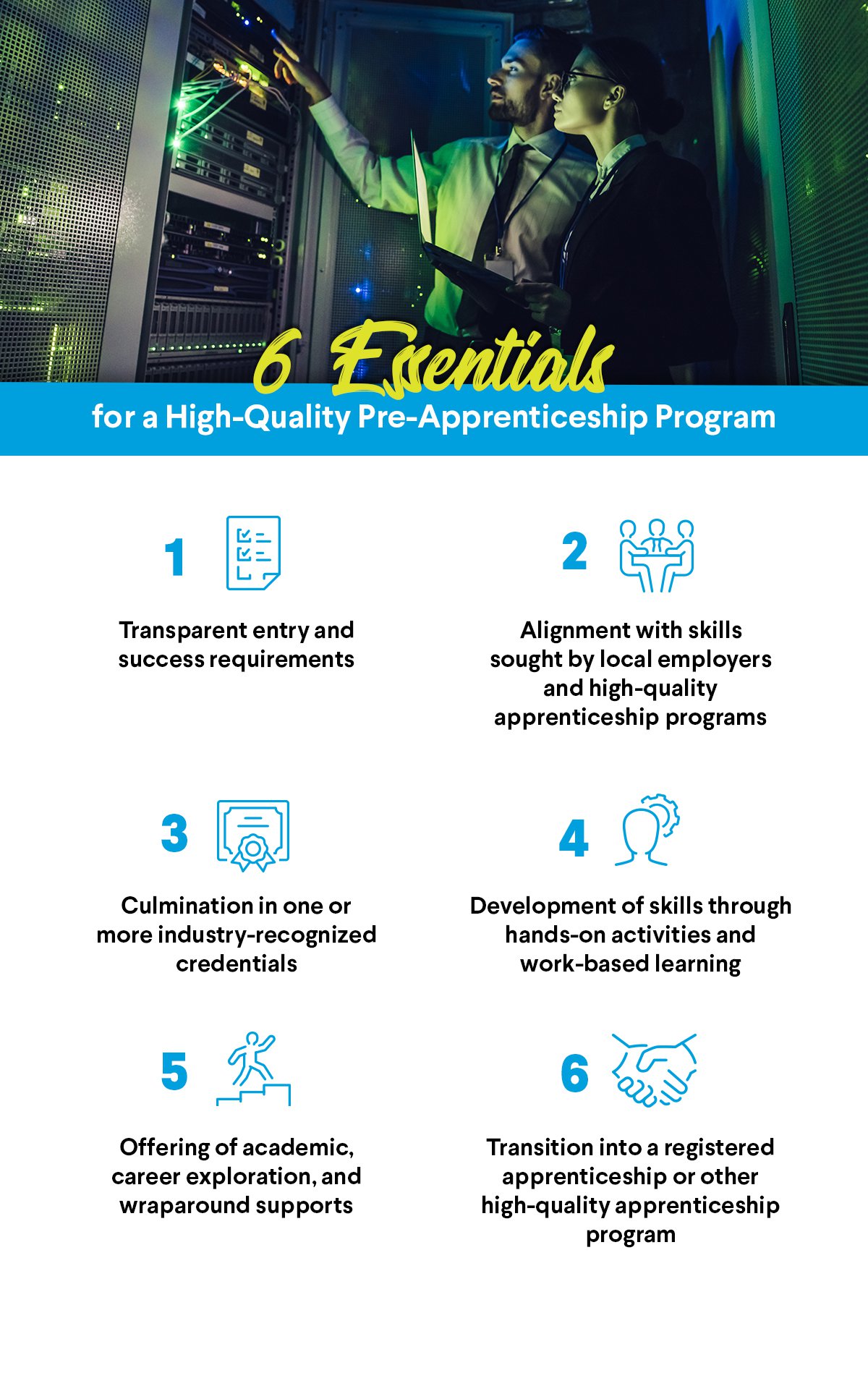
Pre-apprenticeship programs are designed to prepare individuals to enter and succeed in a Registered Apprenticeship or other high-quality apprenticeship program, and ultimately a career. They can be delivered by a range of entities including community-based organizations, high schools, labor organizations, workforce agencies, or community colleges. For educational institutions, the programs can and should integrate directly into their existing curriculum and structure. High-quality pre-apprenticeship programs link directly to existing apprenticeship programs and provide the instruction, preparation, and supports to advance participants to apprenticeship programs or careers.
With high-quality implementation, these programs can be a bridge to career opportunities for students, new workers, or underprepared learners. This is a particularly effective strategy to prepare underrepresented populations for high-quality employment opportunities and to increase diversity and equity through the apprenticeship and workforce systems.
Unlike the registration process that is available for apprenticeship programs at the state and federal levels, pre-apprenticeships are not federally vetted. Instead, the U.S. Department of Labor has outlined several elements that encompass a quality pre-apprenticeship program in its Training and Employment Notice (TEN 13-12) and in Training and Employment Guidance Letter (TEGL 13-16). However, many states such as Ohio, Pennsylvania, North Carolina, and Wisconsin, among others, are beginning to formally recognize or register high quality pre-apprenticeships that meet certain state requirements and are typically linked to existing apprenticeship programs.
JFF developed this framework to build from those elements and provide a deeper look into the specific, aspirational characteristics of a high-quality pre-apprenticeship program, drawing from our work with pre-apprenticeship programs around the country for a wide range of populations.
We recognize that there are many pre-apprenticeship or apprenticeship readiness programs currently in operation that do not have all of these characteristics, and we acknowledge that these take time and resources to achieve. Our intent is to identify specific programmatic elements that will ensure both equity and quality in pre-apprenticeships, while also leaving flexibility for programs to be customized to specific populations or industries.
We hope that this framework will not only inspire providers to review their programs but will also spark a needed conversation among partners, companies, and the field at large about how to support, structure, and fund high-quality pre-apprenticeship programs that enable diverse populations to succeed.
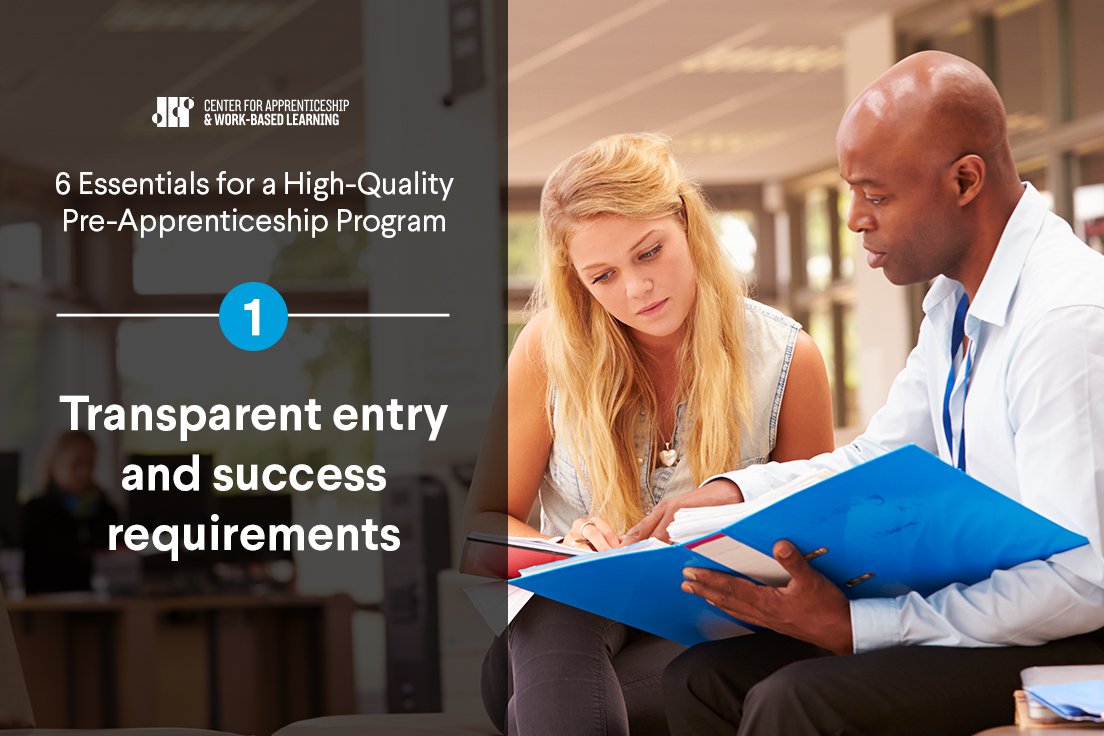
1. Transparent Entry and Success Requirements
- Clearly articulates entry requirements, including stipulations on any academic prerequisites, employability skills, and social-emotional skills.
- Clearly articulates expectations for participation, such as self-management, persistence skills, and other success requirements.
- Clearly articulates requirements for successful transition from the pre-apprenticeship program to at least one apprenticeship program, including skills, credentials, and other aspects that ensure access to stable employment (such as a drivers’ license, fees, drug testing, or GED).
- Identifies and flags for participants which requirements, such as physical capabilities or absence of specific criminal convictions, cannot be overcome through program supports, and works with Registered Apprenticeship sponsors to add accessibility by removing these barriers whenever possible.
- Implements strategies to help participants address gaps in requirements for entry into an apprenticeship.
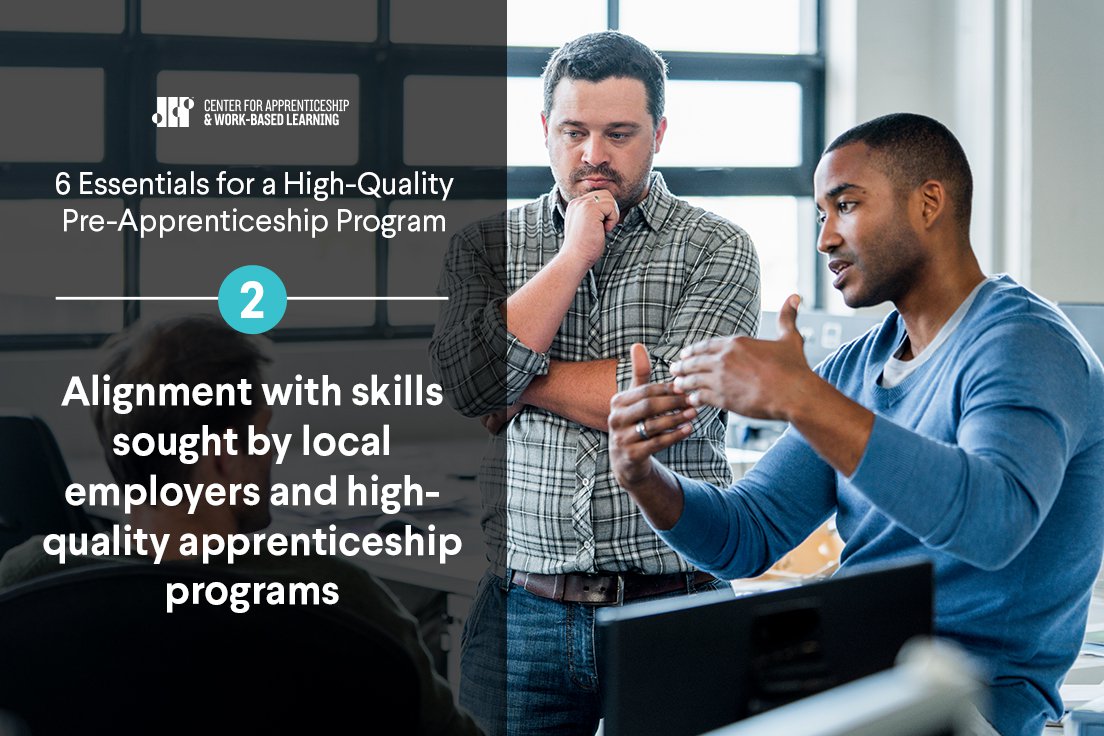
2. Alignment with Skills Sought by Local Employers and High-Quality Apprenticeship Programs
- Supports participants in acquiring employability skills such as teamwork, written communication, problem solving, initiative, flexibility, and reliability.
- Supports participants in acquiring sufficient skills and academic credentials for entry into a high-quality apprenticeship or an entry-level job with advancement potential in the industry.
- Aligns curriculum with a range of training and employment pathways.
- Designs instruction and training to reach underserved populations.
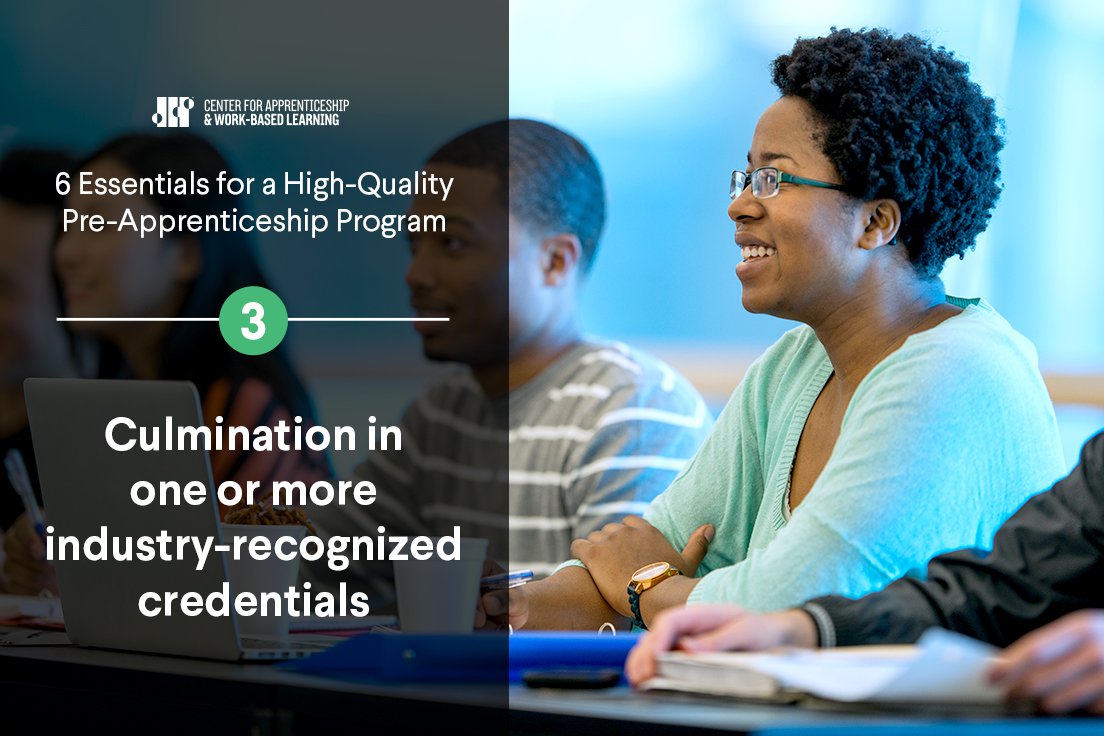
3. Culmination in One or More Industry-Recognized Credentials
- Facilitates earning credentials that support direct entry into the workforce, are aligned with labor-market demand, and are validated by regional and/or national employers or industry associations.
- Facilitates earning credentials that are stackable and portable.
- Facilitates earning credentials that prepare participants or align with the skills identified for training and curriculum.
- Embeds preparation for earning industry-recognized credentials into the curriculum, including supports such as test delivery.
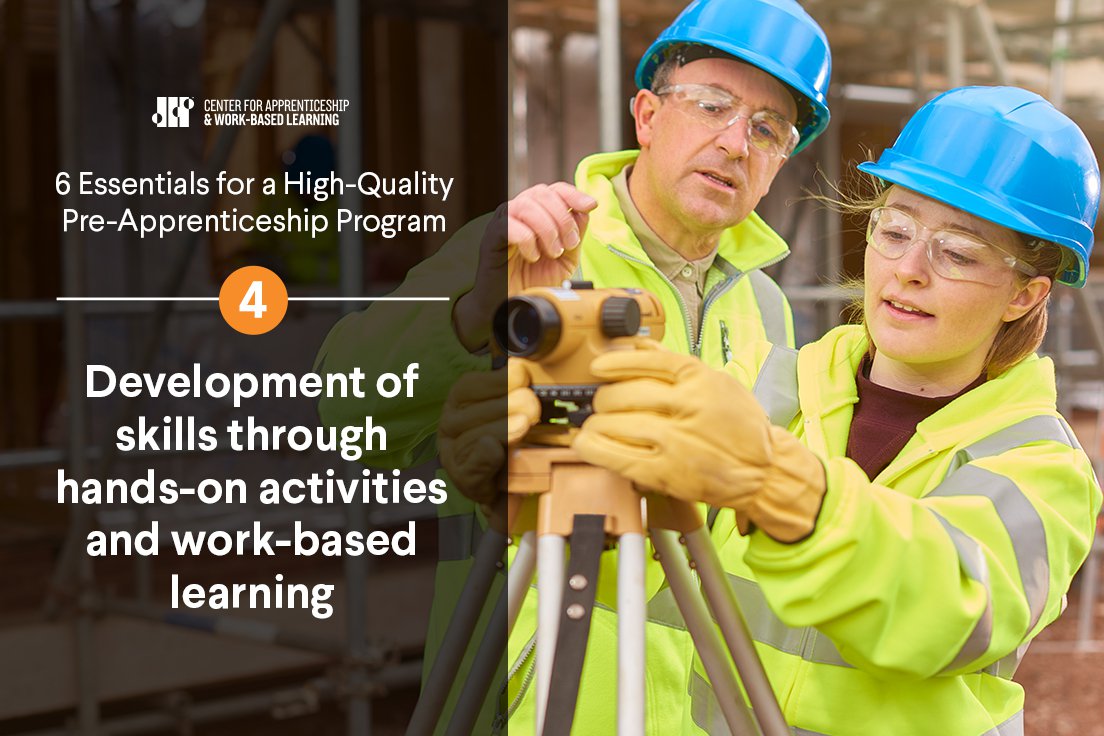
4. Development of Skills Through Hands-On Activities and Work-Based Learning
- Embeds hands-on activities into the curriculum, including work-based learning or on-the-job learning, that are relevant to the target occupation.
- Structures hands-on activities to make clear what skills are gained, how they are validated, and how they can be applied in a future career.
- Structures hands-on activities in a classroom, worksite, or lab to be experiential, problem-based, and designed with input from employers and apprenticeship sponsors.
- Prioritizes opportunities for work-based learning, in which the participant completes meaningful job tasks in a workplace.
- Uses work-based learning to develop participants’ understanding and ability to navigate company and industry culture, as well as specific position functions and workplace policies and procedures.
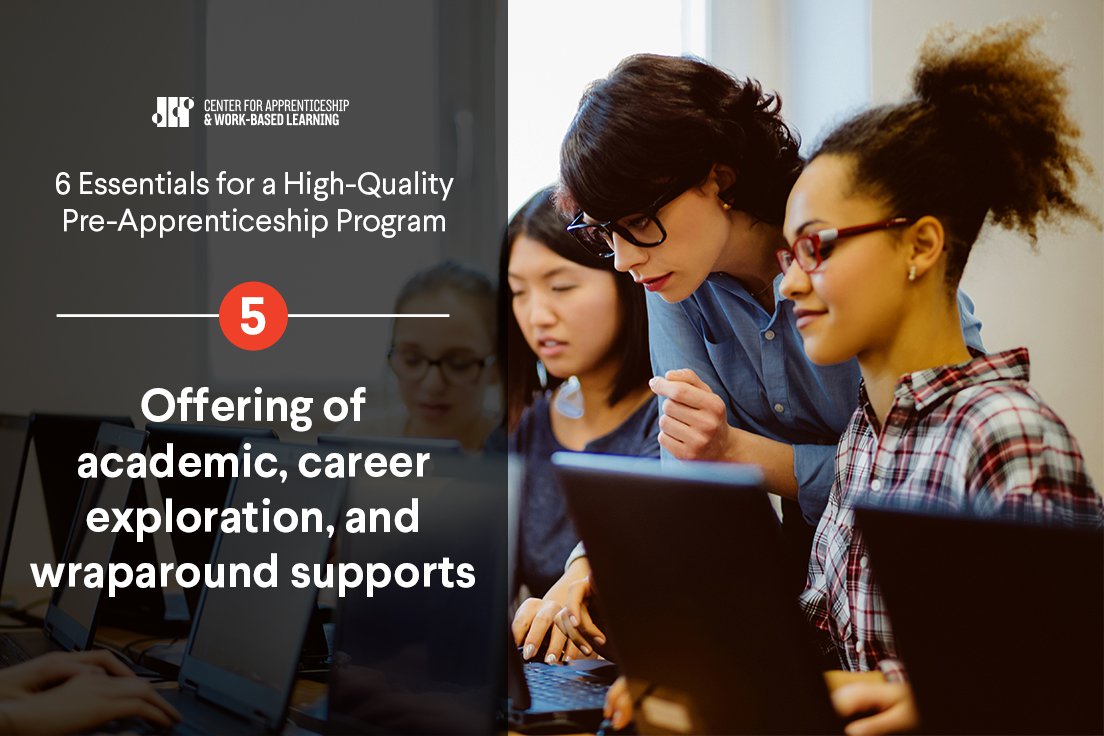
5. Offering of Academic, Career Exploration, and Wraparound Supports
- Provides orientation to the industry and exposure to a range of occupations, career paths, wages, and information about job opportunities.
- Supports exploration of postsecondary credential options aligned with career interests.
- Supports participants in developing a career plan that identifies short- and long-term goals, including potential barriers and possible solutions.
- Provides wraparound supports such as tutoring and case management, including access to resources for child care, mental health, transportation, and housing.
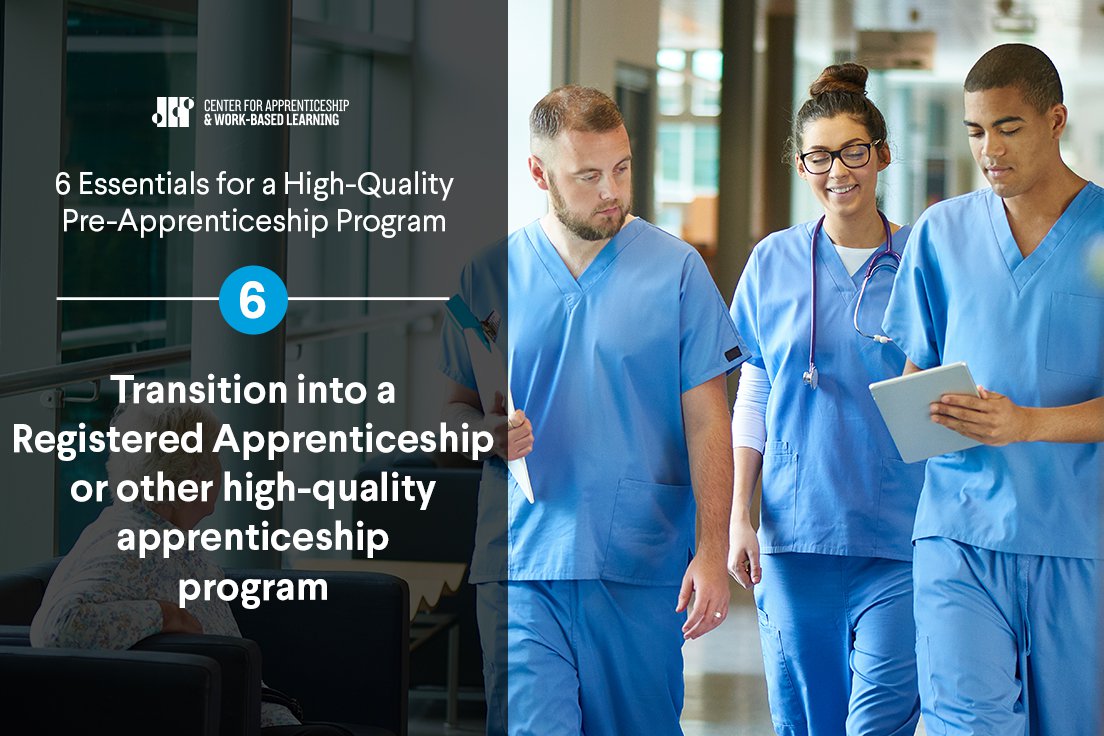
6. Transition into a Registered Apprenticeship or Other High-Quality Apprenticeship Program
- Partners with industry, employers, unions, intermediaries, and the public workforce system to facilitate placements.
- Works with program sponsors to determine their form of selection preference for program graduates, such as guaranteed interviews or direct entry into a high-quality apprenticeship.
- Facilitates the provision of advanced standing when the curriculum of the pre-apprenticeship program overlaps with the apprenticeship program.
- Connects program graduates who do not enter an apprenticeship to a postsecondary education and training option, or to an employer in a related field for an interview.
The dissemination of this framework was funded by the generous support of Salesforce as part of JFF’s Apprenticeship Awareness and Expansion Initiative. The national initiative expands apprenticeship and other high-quality, structured work-based learning programs through on-the-ground technical assistance and a resource and communications campaign.
Related Content

Framework for a High-Quality Pre-Apprenticeship Program: IT
This pre-apprenticeship framework outlines the six key characteristics of a high-quality pre-apprenticeship program with a focus on the IT industry. What is Pre-Apprenticeship? This pre-apprenticeship framework outlines the six key characteristics of a high-quality pre-apprenticeship…

Getting Started with Pre-Apprenticeship: Partnerships
Getting Started with Pre-Apprenticeship: Partnerships *Getting Started with Pre-Apprenticeship* provides an overview of the steps required to develop a pre-apprenticeship program that leads to an apprenticeship. Pre-apprenticeship prepare women, people of color, and other underrepresented…

Center for Apprenticeship & Work-Based Learning
This tried-and-true training model has been around for so long because it works. JFF is a leader in expanding apprenticeship and work-based learning to new industries and professions. This tried-and-true training model has been around…
